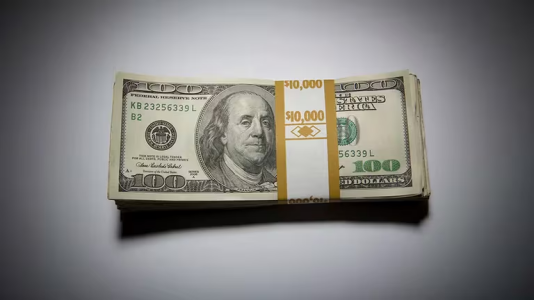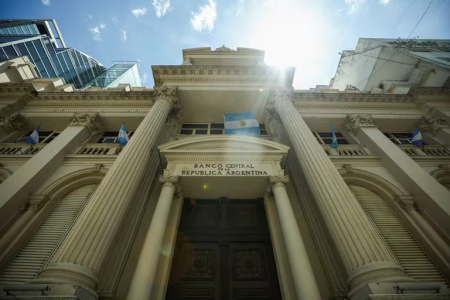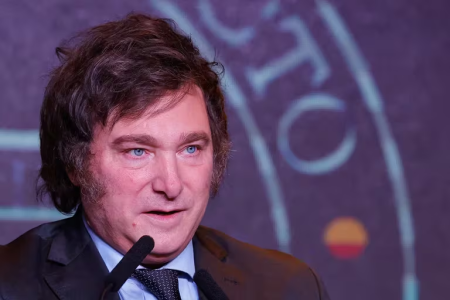All the Answers
Well-known member
What is going to happen to the dollar?: the keys that explain the decline and what experts expect for the coming months - Infobae

Source:

¿Qué va a pasar con el dólar?: las claves que explican la baja y qué esperan los expertos para los próximos meses
La retracción en la cotización de la moneda norteamericana es multicausal. Cuáles son los factores claves identificados por los especialistas
March 11, 2024
The retraction in the price of the North American currency is multi-causal. What are the key factors identified by specialists?

The free dollar remains below $1,000 (Bloomberg)
In recent weeks, a drop in alternative dollars to the official one was observed. For what is this? There are many factors that lead to this situation. According to the consultants, one of the main causes that explains why parallel dollars are falling is the management of monetary policy by the National State, but there are many other variables that come into play.
Restrictive monetary policy
“We have a very restrictive monetary policy. Since Milei took office, the monetary base grew only 6.6% in nominal terms, which gives a real fall of 37.5% in that period,” they explained from Econviews.The consulting firm led by Miguel Kiguel explained that the “Private M2”, which is a broader measure of the amount of money in the economy, rose 44.6% nominally (mostly due to the high seasonality of December) but fell 15% adjusted due to inflation since Milei took office. “There is evidence of a decrease in the monetary supply, but there are also contradictory signals because on the other hand the interest rate remains at the level of the policy rate. If there were a strong monetary squeeze, the rate should rise, something that is not seen. The interbank rate was around 90-95% since mid-December without showing sharp increases,” they analyzed.
Gustavo Reyes , from Ieral (Mediterranean Foundation) explained that at the beginning of last December the situation was dominated by a marked excess of pesos with its corresponding counterpart of shortage of dollars and an extremely weak monetary entity, with deterioration of its balance. “The short-term objective of the new management seemed clear, although not so easy to execute: reduce the excess pesos and rebuild the Central Bank's reserves. The data at the end of February show that all variables improved substantially,” said the economist.
“In the last three months the Central Bank strongly reduced domestic credit (negative variation) and, given the increase in nominal demand for the monetary base (need to have more nominal pesos for transactions with higher prices), it began to buy dollars. In this way, the reserves of the monetary entity (gross and net) improved, this reduced unrest in the financial market and private deposits in dollars began to recover,” Reyes analyzed.
Austerity, more reserves and recession
Weekly also identified several triggers that led to the tranquility of the dollar in its different versions. “It is not possible to assign exchange rate peace to a single variable. Among the relevant factors, we have: fiscal austerity; the liquefaction of the monetary mass; the improvement of the BCRA's net reserve position😉 the deepening of the recession that, in a framework of dollarized companies and individuals, pushes the financial supply; the “blend” scheme of the exchange market, which generates commercial offers via CCL; and the validity of most of the scaffolding of the stocks,” they commented.
The Central Bank bought USD 9,000 million since the change of Government (Reuters)
In reference to the first point, they recalled that several times the Government recognized fiscal austerity as the main anchor for stabilization. “With February collection that plummeted 10.8% real year-on-year, eyes are on the result of the consolidated non-financial system for the month, since expenses should suffer strong cuts to accompany the drop in income. Let us remember that in January primary spending sank 39% in real terms annually, something unprecedented in 30 years,” they commented.
On the other hand, they pointed out that both the liquefaction of the pesos and the purchase of Central reserves have nuances. “On the one hand, the liquefaction of the monetary entity's liabilities (6% of GDP in March from 9% in December) is not such if the stock of puts is contemplated (a potential monetary issue of 3% of GDP). On the other hand, the accumulation of reserves of USD 9.6 billion since the devaluation occurs in a context where private demand for foreign currency is affected by regulatory obstacles. A large part of importers are still unable to access the MULC due to regime changes from SIRA to SEDI,” they warned.
“On the path of flows, the deepening of the recession and inflation promotes sales of foreign currency hoarded by companies and individuals. The latter pushes the financial offer,” they added.
“In any case, the 'blend' scheme of the exchange market is the variable that best explains the calm of the financial price of the currency. With the obligation to pay 20% to the CCL and an increase in incentives for selling abroad, as a result of the devaluation of December 13, exporters are natural commercial suppliers in a market with strangled financial demand.
Market correction
According to specialists, another factor that conditions the decline of the dollar is a correction of an exaggerated rise in the previous months. “There may be a correction of the overshooting that occurred at the beginning of the program. The exchange rate usually moves in overshooting and undershooting. In the past we have seen episodes of overshooting. Generally there was an announcement or a measure that generated an increase in the exchange rate that was fueled by fears that it was out of control. The more it went up, the more people bought until at some point the market realized that it had risen a lot and stabilized. Now we may be facing an inverse phenomenon, in which the drop in parallel exchange rates generates expectations that it will drop further and people sell, which deepens the drop," they analyzed from Econviews.
For specialists, the May Pact will be key in the future of the dollar EFE
Future prospects
There are no certainties about how the dollar may behave in the coming weeks or months, but some conclusions can be drawn based on the current scenario. For Gustavo Reyes , from Ieral, the more progress there is in a political consensus to carry out the structural reforms proposed in the social pact of May 25, the greater the confidence will be in the economic plan and this will result in a recovery in the demand for pesos that It will also help in the process of inflation and exchange rate stabilization.For Econviews, the conditions are in place for the dollar to adapt to the pace of general inflation, but not immediately. “Our vision is that Argentina needs a competitive (high) exchange rate in an environment in which the Central Bank has to accumulate dollars. The little more than USD 9,000 million that has been purchased so far was in the context of a clampdown that remains strict, and in which debts continue to accumulate for unpaid imports. In the coming months, import payments will begin to normalize and if the real exchange rate continues to appreciate there will be incentives for imports to grow above what is necessary,” they noted.
“On the contrary, there will be no motivation to liquidate exports. The combination of these two facts implies that it will be more complicated for the BCRA to rebuild the stock of reserves. By bringing the devaluation rate to a rate closer to that at which prices rise, this could be solved without major inconveniences and without a large inflationary cost,” the consulting firm concluded.

